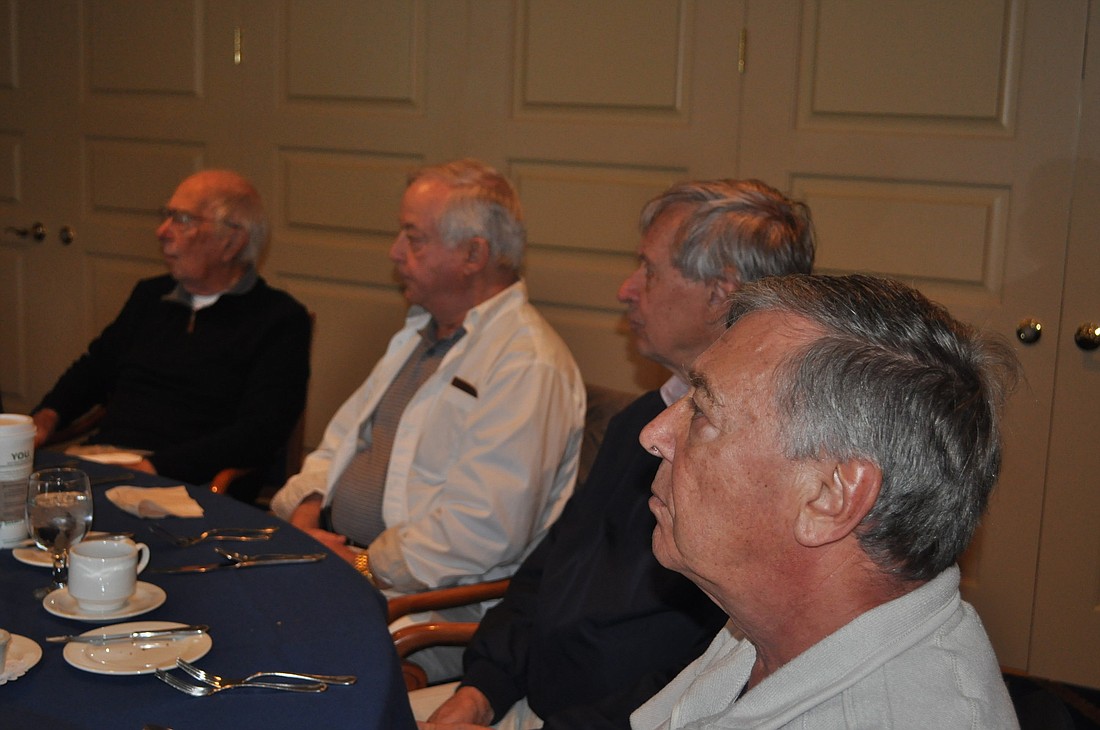- April 17, 2024
-
-
Loading

Loading

Energy can neither be created nor destroyed. It can only be transformed into another state. It’s one of the empirical laws of physics, known as the law of conservation of energy.
It could explain the force behind the Longboat Key Physics Club. Its members have always had an energy — make that a passion — for physics. They spent their careers as engineers and physicists, physicians and professors. Then, they left the laboratories and classrooms behind for sunny Longboat Key. But, even when surrounded by beaches, golf courses and tennis courts, that energy for physics didn’t go away. It just took on a different state.
So, that’s why once a month, approximately 30 physics enthusiasts, including three retired physics professors, gather around a table to talk physics.
“I look at physics as a brand of natural philosophy,” says Dr. Leonard Biberman, an internist with a lifelong love of physics books. “Physics is the most basic of sciences and the one on which all the other sciences have developed.”
It all began more than three years ago when Biberman struck up a conversation with retired Trinity University physics professor Charles Miller and his wife, Cynthia, when they sat next to each other at the Sarasota Opera. Biberman invited Miller to have lunch at the Blue Dolphin Café with his friend, Pat Anderson, who was one of just two nuclear physics majors in her class at Smith College and went on to work in information technology. The meeting was set up so that three of them could talk physics.
“We talked about Planck’s Constant the whole time,” Anderson said.
(Non-physics majors read: That’s a physical constant reflecting the sizes of quanta in quantum mechanics.)
The three started meeting for lunch once a week. Then, Pat Mellett, who has a physics degree, joined them. The group started reading the text “Quantum Electrodynamics,” with a different member giving a talk on a chapter each week. Anderson’s husband, Jim, a retired electrical engineer, soon joined them. Then, the Longboat Key Club and Resort advertised the group in its newsletter, and momentum began to build.
The group now meets once a month at Bird Key Yacht Club, with members taking turns giving presentations.
One popular discussion focused on multiple universes. The discussion stretched more than two hours. In January, Tom Watson, a retired geophysicist, spoke about earthquake seismology. In February, Dr. Frank Sulzman, a molecular-and-cell biology Ph.D. who is currently project executive of the NASA Space Radiation Project, gave a presentation on the Hubble telescope and why it failed.
The group isn’t a social club — each member has a scientific background. Instead, it’s a forum for members to take the energy they feel when they explore physics and use it constructively.
“It’s a way for all these people that were in the sciences to get together and still learn something,” Anderson said.
Said Gabe Rosica, a retired electrical engineer, at the club’s January meeting: “We’re the nerds of Longboat Key.”
DYNAMIC DISCUSSIONS
The following topics are just a few of the issues that Physics Club members have discussed at recent gatherings.
• History of cathode ray tubes and their future applications
• Imaginary numbers
• Multiple universes
• NASA explorations
• Quantum electrodynamics
• Weather satellites
Contact Robin Hartill at [email protected]